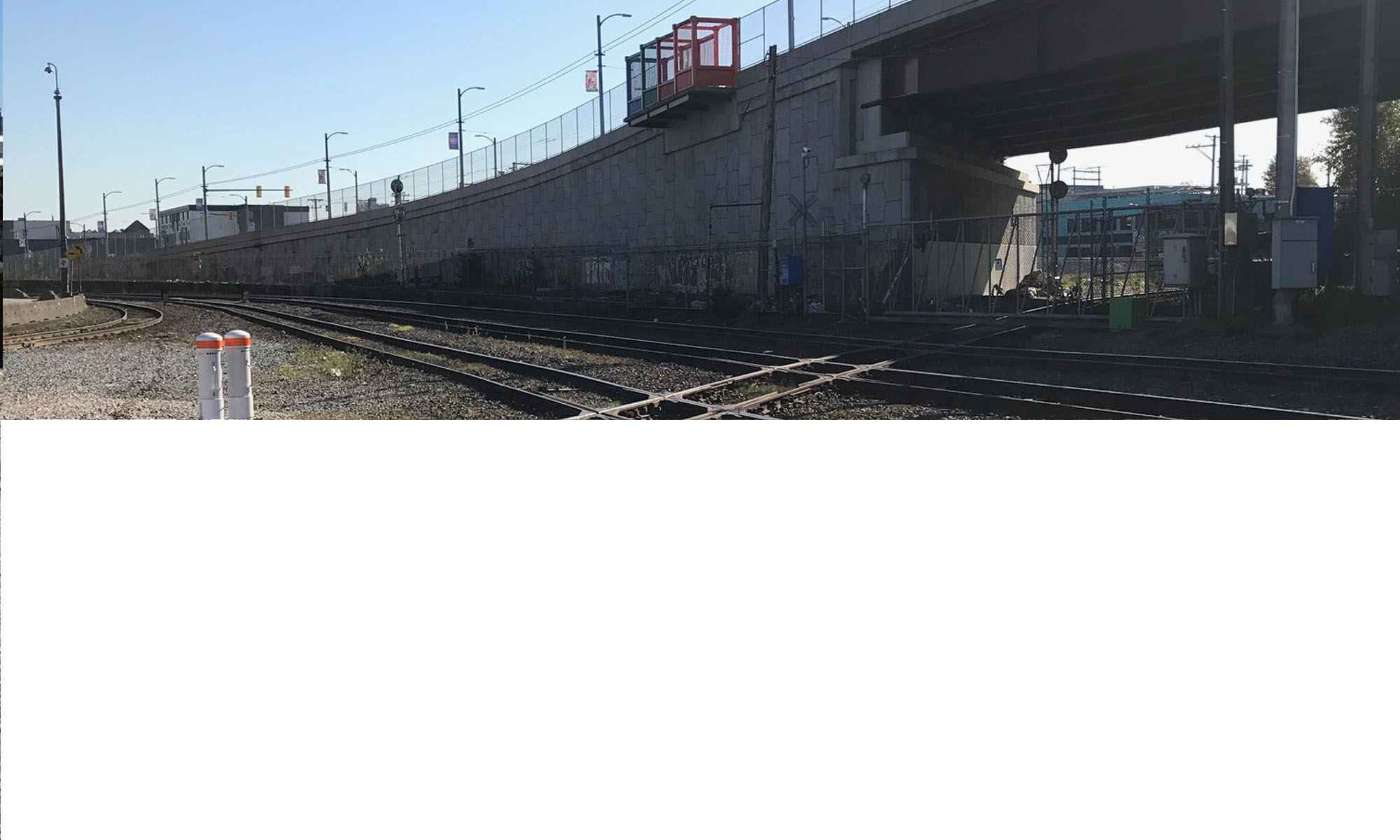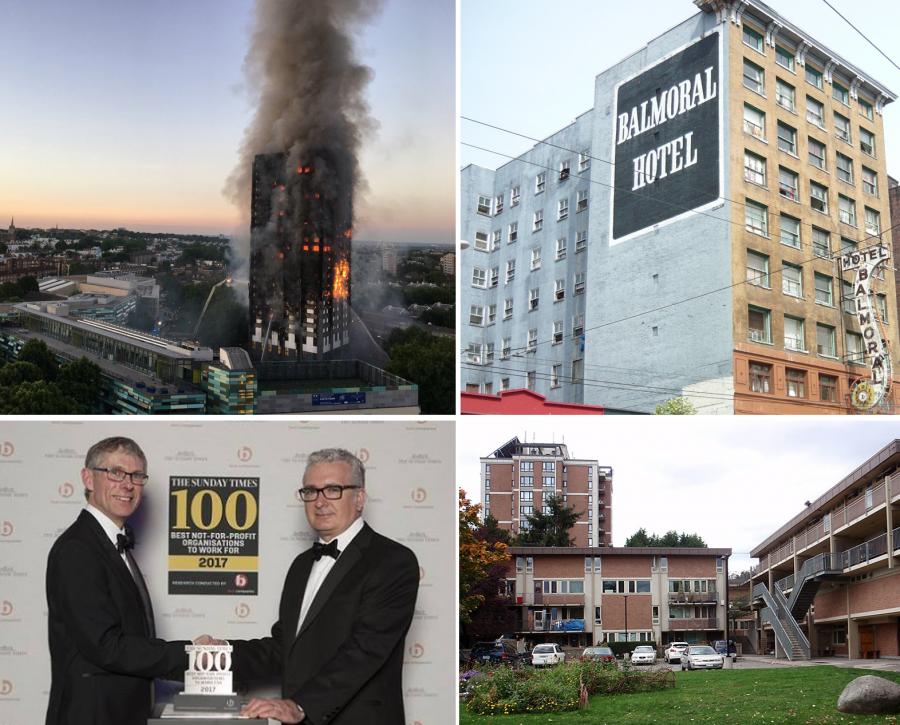Twitter: @PtFryFacebookGoogle+LinkedInEmail Me
From Grenfell to Balmoral: The case for public housing
June 14, 2017

As I post this, authorities are still determining the loss of life from the smouldering remnants of the 24-story Grenfell Tower in West London. Videos and images of the early morning towering inferno leave little doubt that the final tally of casualties and loss of life will be grim. Gut-wrenching stories of trapped residents, parents desperately trying to save their babies by dropping them from upper floors to rescuers below. This, the stuff of absolute nightmares.
It’s too soon to guess the cause of the fire at Grenfell, but what we do know is that the residents of the building had been complaining for years about the appalling state of disrepair and dereliction of duty toward safety. Ultimately though, the cause of this tragedy is privatization of public housing.
In November 2016, the residents’ led Grenfell Action Group wrote of dangerous living conditions and neglect of health and safety, warning ”that only a catastrophic event will expose the ineptitude and incompetence of our landlord, the KCTMO”. These resident complaints go back years, with another post from 2013 describing alarming evidence of serious negligence over several years… part of a history of negligence that in all likelihood stretches back to 2004 and beyond.”
In the UK, Tenant Management Organizations (in this case the Kensington Chelsea TMO, an “arms-length” organization) are non-profit non-governmental groups tasked with managing public housing stock. These public private partnership arrangements are effectively managed like corporations and criticized as a neoliberal scheme to privatize public housing. In the case of Grenfell, tenants described KCTMO as an ”evil, unprincipled, mini-mafia” who routinely cut corners on safety in order to save money.
The trend towards privatization of public housing should sound familiar — these kind of neoliberal housing schemes are happening throughout the industrialized world. Here in Vancouver in 2014 we saw the privatization of two significant BC Housing projects: the Nicholson Towers (West End) and Stamps Place (Strathcona) under what’s referred to as the “Asset Transfer Program”. These substantially large tax-payer built housing projects are now owned by not-for profit organizations, underwritten by the province, and purchased at bargain prices. Rents are paid to the new owners with subsidies and social services, and those revenues help underwrite the non-profits’ operations. The scheme conveniently avoids any rent controls though, and being dependent on subsidies these units can eventually shift from social housing to (more expensive) affordable market housing, at the whim of government austerity measures.
In a similar vein, we have SROs like the Balmoral. Privately owned and managed, rent on these SROs are also paid by provincially-funded subsidies and social services. In many cases, land owners’ profit comes at the expense of safety, cleanliness, livability and basic amenities (like elevators, garbage-free stairwells, and functioning bathrooms). As we have seen from the recent Balmoral debacle (which captured Vancouverites attention when it was evacuated, at the point of collapse after years of neglect) for over a decade the city turned a blind eye to legally mandated Standards of Maintenance. The city sanctioned SRO (single room occupant) designation allows for small size units without bathroom or kitchen. SRO designation is not tied to any specific amount of rent, so if the $375 per month social assistance housing allowance is no longer profitable, the buildings are sold and renovated into budget “micro-lofts”.
The Grenfell fire is a tragic reminder that in too many cases of badly neglected low income and public housing —it’s not a matter of if, but of when— the building will become a risk to life and security of person. As groups like DTES SRO Collaborative have been warning, the Balmoral is not especially unique among the coterie of privately-owned, decrepit and unsafe SRO buildings. The policy-driven drift toward further privatization of public housing in BC should be cause for concern.
With some notable exceptions (like Vienna, Austria) the industrialized world’s trend toward privatization of public housing has been been steady increasing since the 1990’s. Public Housing is being sold off. The foundational idea that housing is a fundamental human right and a responsibility of the state has been supplanted by the the need to cream profits for insatiable corporate greed —the essence of neoliberalism.
This tragedy is not just happening 7500 kilometers away, the seeds of this kind of public housing dereliction are planted and growing here too. We see it in the legions of homeless on our streets, or the appalling photos of structural neglect in the Balmoral. As the horrific reality of the Grenfell fire unfolds and grief turns to outrage, let it spur us to action. Write your MLA and MP.
Call upon the new BCNDP-Green supported government to make good on their promise and expedite the building of new social housing.
Call on federal government to make building public housing part of their new Poverty Reduction plan.
Call on city government to unlock land potential for new housing and to strengthen inclusionary zoning on new developments to include truly affordable housing.
Call on all three levels of government to keep public housing in the public’s hands.
For our neighbours. For the Balmoral. For Grenfell.

